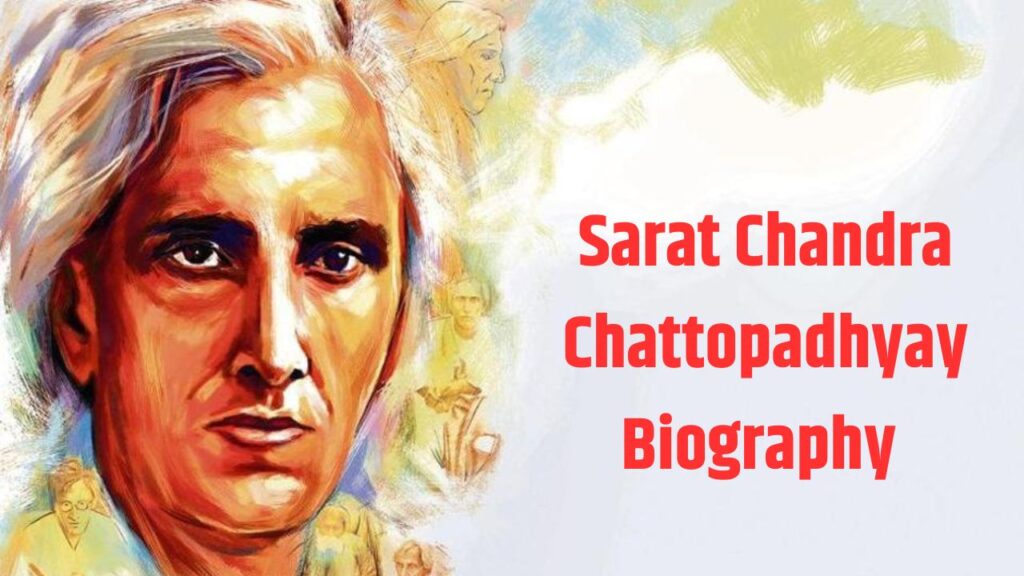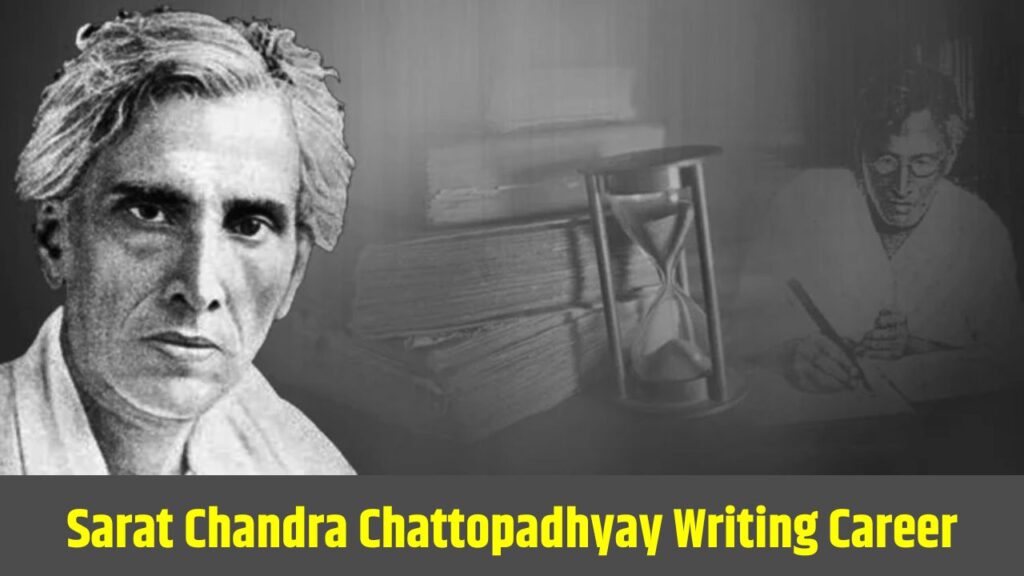Sarat Chandra Chattopadhyay Biography: Sarat Chandra Chattopadhyay, one of the most famous writers in Indian literature, was born on September 15, 1876, in a small village called Debanandapur in Hooghly, West Bengal. He came from a Bengali Brahmin family. His father, Matilal Chattopadhyay, had unstable jobs, which often left the family struggling with poverty.

As a child, Sarat Chandra spent much of his time at his uncle’s house in Bhagalpur, Bihar, due to financial problems at home. These experiences gave him the inspiration for many of the stories he would later write.
Contents
Early Life and Education
Sarat Chandra started his education at a small village school and later attended Hooghly Branch High School, where he excelled in studies. He even received a double promotion. However, he had to stop formal education after passing the Entrance Examination in 1894 because of financial issues.
Even without much schooling, Sarat Chandra loved literature. His father encouraged him to read and imagine, which helped him become a great writer later. He began writing in his teenage years, using what he saw and experienced in his surroundings.
His first story, “Mandir,” won a competition and was published under his uncle’s name. This was the beginning of a career that would make him one of India’s most beloved writers.
Writing Career

Sarat Chandra’s professional writing journey began when he moved to Burma (now Myanmar) in 1903. He worked in clerical jobs for 13 years while continuing to write and polish his skills.
When he returned to India in 1916, he started writing full-time. His novels and stories appeared in well-known magazines like Jamuna and Bharatvarsha. Over his lifetime, he wrote more than 30 works, many of which became classics in Bengali literature.
Famous Works
- Devdas (1917): A tragic love story about Devdas and Parvati, which has been adapted into films in many languages.
- Srikanta: A semi-autobiographical novel exploring love, friendship, and life’s deeper questions.
- Pather Dabi (1926): A revolutionary novel supporting India’s freedom movement, banned by the British.
- Charitraheen (1917): A story about human relationships and women’s struggles in a male-dominated society.
- Parineeta (1914): A romantic story highlighting the social challenges faced by women.
Themes in His Writing
Sarat Chandra’s stories were simple yet powerful. He often wrote about:
- Social Issues and Women’s Rights: His stories highlighted women’s struggles and criticized unfair social norms.
- Love and Tragedy: Many of his works, like Devdas, dealt with love and heartbreak caused by societal pressures.
- Rural Life: He described life in villages with deep understanding, showing customs and challenges.
- Social Change: His stories called for equality, women’s rights, and an end to caste discrimination.
Influence and Legacy
Sarat Chandra’s writings have been translated into many languages and adapted into films, plays, and TV shows. His ability to portray human emotions and fight against social injustices has inspired countless writers, including R.K. Narayan and Kamala Das.
His works like Devdas remain iconic, and characters from his novels are still celebrated in Indian culture.
Also read: Shantanu Deshpande Biography
Awards and Recognition
- Jagattarini Gold Medal (1923): Awarded by the University of Calcutta.
- Honorary Doctorate (1936): Given by the University of Dacca.
Remembering Sarat Chandra Chattopadhyay Biography
Sarat Chandra’s stories of love, struggle, and hope continue to inspire readers even today. The annual Sarat Mela in West Bengal celebrates his life and work, keeping his memory alive for future generations.
Through his heartfelt storytelling, Sarat Chandra Chattopadhyay remains a shining light in Indian literature, proving that simple stories can leave a lasting impact.